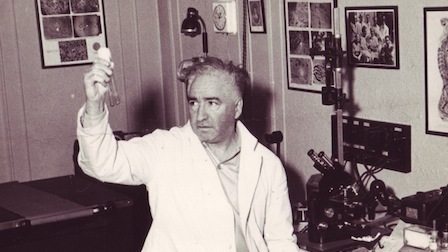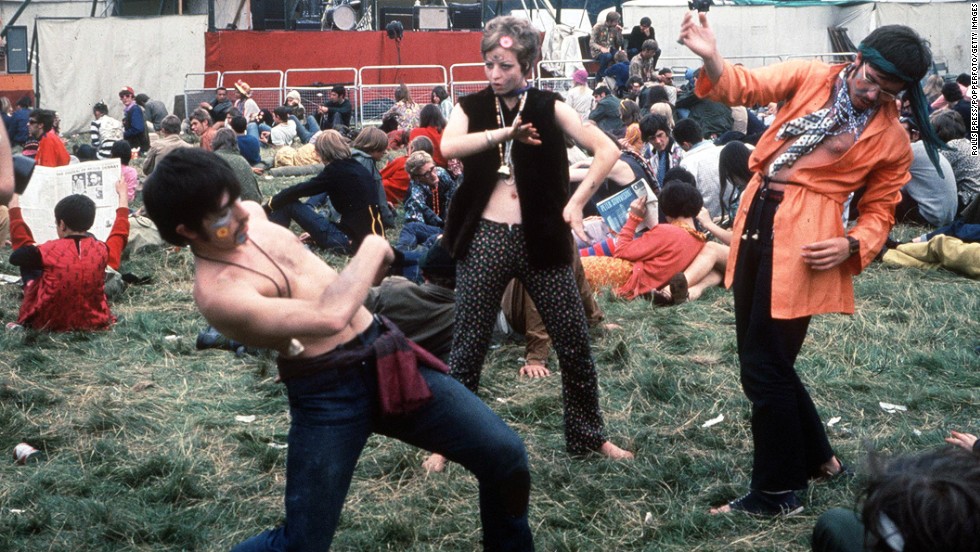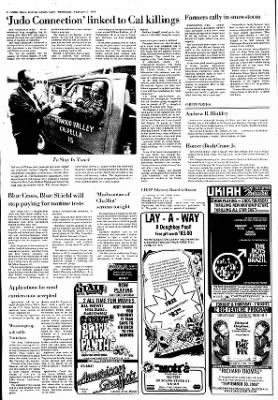AFTER THE ORDEALAfter all that, are “delusions of enlightenment” alright? Some would ridiculously say so:
Better these people should think they’re enlightened, which is a wonderful aspiration, than be robbing stores or taking heroin or beating their wives or kicking their dogs. I think that one of the most wonderful things is the delusion of enlightenment, even if it is a delusion. At least it represents an aspiration that is better than an aspiration to be a murderer (Joan Halifax, in [Caplan, 2001]).
Yeeeiikes!!!
Are the “best” of history’s “sages” really better than our world’s bank robbers, drug addicts, wife abusers or animal mistreaters? Are they not arguably worse? For, note that more than one of them has allegedly misused (i.e., effectively stolen) temple funds, or feasted while his most devoted followers starved, thus exhibiting less moral sense than the average bank robber. (Stealing from a church or from one’s friends and admirers, after all, has got to be morally worse than stealing from a faceless corporation or a bank.)
In the same vein, more than one has been accused of physically beating or otherwise brutally oppressing his or her spouse. As the Mill Valley Record (Colin, et al., 1985) reported:
On one occasion during a raucous party at the church sanctuary in Clear Lake, eyewitnesses say they saw [Adi Da] push his wife Nina down a flight of stairs. They also claim that during that party Jones pulled a sizable hunk of hair from her head.
“Concerned physicians.”
[Rajneesh] wasn’t the Master [Deeksha had] fallen in love with. She’d witnessed him beating Vivek once, she swore (Franklin, 1992).
Recall also Swami Rama reportedly kicking women in the buttocks. And further:
Chögyam Trungpa wrote that Marpa, the tenth-century Tibetan guru, “lost his temper and beat people.” Marpa is also considered an incarnate Buddha, the spiritual father of Tibet’s greatest yogi Milarepa. Maybe his beatings were compassion in disguise, but it is hard to understand why the same argument could not be made for the drunk who abuses his wife and children (Butterfield, 1994; italics added).
In terms of the aforementioned (and above-denigrated, by Halifax) use of illicit and abused prescription substances: Included among the usage attributed to various “genuine sages” have been LSD, mescaline, psilocybin, nitrous oxide, and the opium derivatives Percodan and Demerol. Also amyl nitrite, a blood vessel-dilator used to cause a “high” or to improve sex; and, it goes without saying, marijuana. Not to mention Quaaludes reportedly given as a medical treatment in Rajneeshpuram. (That only Percodan, Demerol, Quaaludes and nitrous oxide among all those are recognized as being—like the opiate heroin—physically addictive, seems somewhat beside the point.) And God only knows what the police were expecting to find when they raided Trungpa’s Scottish center. (People with nothing to conceal generally do not feel the need to desperately hide themselves, as Trungpa did, in such circumstances.)
Even metaphorically, the analysis fares no better:
Fred [Stanton]’s final comment on Andrew [Cohen] was, “Andrew creates addicts. It’s like giving people heroin” (Tarlo, 1997).
On top of that, we again have “genuine masters” allegedly building secret passageways leading to the dormitories of young girls in their care. (Caplan quotes frequently and respectfully from Muktananda in her books, thus inadvertently providing a bad, bad example from him of how not to do the guru-disciple relationship properly. Both of her relevant books were written well after the 1994 New Yorker exposé of him by Lis Harris.) Plus, we have the reported pedophilia/ephebophilia of universally revered figures such as Ramakrishna, as an early precursor to the allegations against Sai Baba. Also, holy Zen masters “beating the crap out of” their disciples, even to the point of death, and being celebrated for their macho, “ego-killing” abuse by foolish persons who themselves have obviously never been thus “beneficially” beaten. And all of that is ever done, of course, “in the name of God, for the compassionate benefit of all sentient beings,” by great bodhisattvas and otherwise. And woe unto any “disloyal” disciple who should even think otherwise, and thereby risk his “one chance at enlightenment” in this life.
I myself am again in no way anti-drug, anti-dildo, anti-secret-passageway-to-the-dormitory, anti-whorehouse, anti-orgy or anti-leprechaun. It is simply obvious, by now, that any of those, when put into the hands of “god-men” who have carved islands of absolute power for themselves in the world, only make an already dangerous situation much worse.
We can surely agree with Ms. Halifax in her three decades of experience, though, that the delusion of enlightenment generally “represents an aspiration that is better than an aspiration to be a murderer.” Unless, of course, you’re Charles Manson. For, he borrowed heavily from Eastern philosophy in creating his own pre-rational view of the world, hinted at “deity status” for himself, and believed that “since all is one, nothing is wrong.”
Manson ... called himself “a.k.a. Lord Krishna, Jesus Christ, Muhammad, the Buddha” during a 1986 parole hearing (Agence, 1999).
After all that, it should be painfully clear that the delusion of enlightenment is the most dangerous, not the most wonderful, delusion. (Again, Jim Jones and David Koresh had similar messianic regards for their own enlightenment as does the still-incarcerated Manson. In all three of those “worst” cases, the delusion of enlightenment/divinity undeniably helped create the violent tragedies for which they are each known.) That most-dangerous regard is so if for no other reason than the effect that it has on the ensuing naïve followers. For, those end up throwing their lives and sanity away on persons who, even while laying claim to the highest levels of enlightenment (whether validly or psychotically), grandiosely deceive themselves, and then mislead others, all with the apparent goal of being given the proper obeisance due to themselves as “enlightened masters.”
And as far as the treatment of animals goes, the spellbinding writer Deborah Boliver Boehm (1996) relates her experiences in a Japanese Zen monastery in Kyoto, upon being presented with two stray kittens:
“Will you keep them?” Saku-san asked.
“What if I didn’t?” I asked.
“Then they would be left to die, or to be found by someone else if they were lucky.”
“But why doesn’t the sodo adopt them?”
“Because then we would become a dumping ground for every unwanted cat in town, and they would tear up the tatami [straw meditation mats]. Besides, some monks have allergies.”
“But what about the vow you take every day, to save all sentient beings?”
“It’s a nice idea, but not very practical,” said Saku-san with a wide-shouldered shrug.
At least they don’t kick their dogs, swat bugs, or drain water with mosquito larva in it, though. That, after all, would violate the precept of not doing harm to other creatures.
And yet—
[B]eneath the smiles Tibetans obviously are not perfect. It’s not all loving-kindness here; I see a monk beat a dog, another one smokes and while Buddhist texts forbid meat, the fleshy bodies of sheep hang in roadside butcher boxes attracting swarms of flies and shoppers galore....
I know the Dalai Lama has tried to turn vegetarian but so long as he and other Tibetan Buddhists continue to eat meat, the tinge of hypocrisy will remain (Macdonald, 2003; italics added).
Well, at least they don’t ... at least they don’t, um ... no, wait, they do that too, um....
* * *
Having said all of that, one can still sadly strike a much more negative note, when it comes to the effects of messianic delusions of enlightenment/divinity on both leaders and their followers:
Adolf Hitler had a mystical awakening at Pasewalk Hospital in 1918, following the defeat of Germany; it led to his decision to enter politics (Oakes, 1997).
Hitler by now was possessed by delusions of grandeur.... Convinced that he was Germany’s political messiah, his supporters unashamedly referred to Hitler as a prophet.... After reading Mein Kampf, Joseph Goebbels, later the Party’s propaganda chief, wrote “Who is this man? half plebian, half God! Truly Christ, or only St. John?” For the growing number of “disciples” gathering around Hitler at this time—referred to as the “charismatic community”—Hitler was more than just a politician offering political and economic solutions, he was a messianic leader embodying the salvation of Germany (D. Welch, 2001).
As if to further close the circle, then, we find this, in Goodrick-Clarke’s (1994) Occult Roots of Nazism:
The Ariosophists, initially active in Vienna before the First World War, borrowed from the theosophy of Helena Petrovna Blavatsky, in order to prophesy and vindicate a coming era of German world rule....
At least two Ariosophists were closely involved with Reichsführer-SS Heinrich Himmler in the 1930s, contributing to his ... visionary plans for the Greater Germanic Reich in the third millennium....
Ravenscroft adapted the materials of Rudolf Steiner ... to the mythology of occult Nazism.
Nor was that the only relevance of Eastern metaphysics to the Nazi cause:
Savitri Devi, the French-born Nazi-Hindu prophetess, described Hitler as an avatar of Vishnu and likened Nazism to the cult of Shiva with its emphasis on destruction and new creation....
[She] was sure that Hitler had realized he was an avatar while still a youth (Goodrick-Clarke, 2003).
Overall, truly believing that you are “enlightened and can do no wrong”—as every “messiah” and nearly every “meditation master” has role-played himself into believing—gives you unlimited license to mistreat others “for their own good.” Indeed, it actually places your conscience farther out of reach than if you were knowingly manipulating them purely for your own selfish benefit, as a simple con man (or woman).
As Professor J. H. von Dullinger insightfully observed over a century and a quarter ago:
All absolute power demoralizes its possessor. To that all history bears witness. And if it be a spiritual power which rules men’s consciences, the danger is only so much greater, for the possession of such a power exercises a specially treacherous fascination, while it is peculiarly conducive to self-deceit, because the lust of dominion, when it has become a passion, is only too easily in this case excused under the plea of zeal for the salvation of others.







